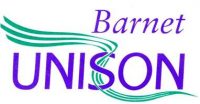Monday 16 August was the first meeting to discuss proposals. I can reveal that…………we did not discuss any proposals. That is right you read correctly, none have been drafted. The employer was hoping the Trade Unions would have some suggestions as to what was or was not up for discussion.
I have to say I was surprised by this approach. I say this because of the complete disregard to the Trade Union and staff contributions on Future Shape programme. I estimate we have submitted over 30 detailed reports on Future Shape and have yet to receive any meaningful response.
I pointed out that similar consultations are taking places across councils in London. However, there is a big difference in Barnet. No other Council is adopting the ‘mass privatisation’ or ‘commissioning model’ whilst at the same time attempting to squeeze out as much as they can from hard working council staff.
When changes such as these are proposed usually a draft proposal is submitted to the Trade Unions. After reading the proposal the Trade Unions would offer amendments. Once a final version has been reached the Trade Unions will consult with members.
In this case the proposal is estimated to impact on over 6,000 staff including staff working in community schools.
Members will no doubt remember that the Council has given a deadline, 25 October. This is the date of the General Functions Committee where Policies need to be agreed by councillors.
We said that this date was not feasible as 30 days have already been wasted since we were first informed of the intention to change the two policies. We made the point that a significant number of staff (community schools) were not due back for another three weeks. Even if we had a proposal they could not be consulted until they return.
We asked for the deadline to be extended. This was refused.
We explained that members were not happy with the prospect of further attacks on their terms and conditions whilst at the same time facing the prospect of being privatised and having a two year pay freeze! Staff are already under pressure to deliver services with less staff, we have had reports that staff are receiving further pressure with regards, ill health, tea breaks and flexible working.
I think it is safe to say Barnet staff aren’t happy.
I asked that a proposal be submitted to the Trade Unions in order we can discuss and provide comments and consult with our members.
It was agreed and two meetings have been timetabled for the 1 and 23 September.
In the interim, once we receive the proposal, we will begin consultation with our members.
How will UNISON consult?
It is important that your union negotiators fully understand the views of the majority of members. In order to maximise the involvement of our members we will write to all our members at their home address. If you have moved home recently please can you contact the UNISON branch at contactus@barnetunison.org.uk with your new details.
A ballot paper will be included with the letter which we will be asking you to complete and return in the prepaid envelope enclosed.
Make sure you complete and send back your ballot paper and check with other UNISON members in your team that they have done the same.
Legal Advice
As soon as I first raised this issue I was inundated by questions as to whether UNISON was seeking legal advice. I can confirm legal advice has been requested. However, I would ask members not to raise hopes that this issue will be addressed through legal challenges. Trade Union history is not about gaining benefits to terms and conditions by winning a legal argument. The gains we all take for granted were earned through the hardship and sacrifices of workers. It may be a surprise for some members to learn there is a legal minimum employer’s calculation for redundancy pay. The Council currently pays more than the legal minimum.


